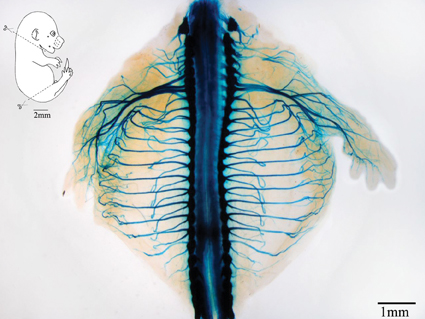When nerve cells lose nerve endings, it's not necessarily bad news.

In fact, in the developing embryo these extensions - the long ones called axons and the shorter and more branched ones called dendrites - are removed in a normal process called "pruning", as an inseparable part of the formation of the nervous system. On the other hand, when an axon degenerates and dies due to disease or an accident, the result may lead to impaired nerve cell function, and paralysis.
Recently, it was discovered that the "healthy" pruning of axons, and the degeneration associated with disease or injury, have a lot in common: it seems that at least some of the mechanisms controlling both processes are the same. This conclusion emerges from a joint study by Dr. Avraham Yaron from the Department of Biological Chemistry, and Dr. Eli Arma from the Department of Molecular Genetics at the Weizmann Institute of Science, which was recently published in the scientific journal Journal of Neuroscience.
"Our findings show that a lot can be learned from studying the development of the nervous system also about mechanisms of nerve damage as a result of trauma," says Dr. Yaron. "This is an important insight, because it is easier to study development: it is a uniform and structured process, compared to an injury, which has its own unique characteristics."
The research was born out of a shared interest in axon pruning, although their laboratories focus on different areas: Dr. Yaron studies the process by which the growing axons reach their target areas during embryonic development, and Dr. Arma mainly studies programmed cellular death, called apoptosis, during development . Thanks to the collaboration, the scientists performed extensive research on nerve cell pruning in various animals, from fruit flies to mice, and showed that pruning is controlled by mechanisms that have been preserved during evolution. Research students and post-doctoral researchers from the two laboratories participated in the study: Zohar Sheinman, Dr. Efrat Asa-Konik, Sheila Tiomani, Adi Minis, and Dr. Liat Heklai-Topher.
The scientists discovered that a certain destruction mechanism - that is, a series of events leading to partial degeneration within the cell - which is known to be involved in the removal of axons after nerve injury, also plays a role in the pruning process during development. This pathway is controlled by a metabolic molecule called +NAD. In addition, the scientists discovered that in order for the pruning to be carried out properly during development, another destructive pathway is activated at the same time, which is usually responsible for the programmed cell death. in parallel. Finally, they discovered how these destruction mechanisms do not damage the cell body while the nerve endings are disintegrating.
Dr. Arma: "It is very important to understand how the axons are eliminated. If we discover the details of this complex process, we may one day be able to block it, thus preventing the loss of function caused by nerve damage."

2 תגובות
Aria, what is not understood? Two cellular destruction pathways are activated at the same time to get rid of the nerve endings without damaging the cell body.
It is strange that in this article they do not provide, even in one sentence, a simple explanation of the nature of axons and dendrites. Dendrites are the entrances to the neuron and the axon is the exit of the neuron.
In addition, there is a contradiction in the next section of the article.
"In order for the pruning to be carried out properly during development, another destruction pathway is activated at the same time, which is usually responsible for the programmed cell death. in parallel. Finally, they discovered how these destruction mechanisms do not damage the cell body while the nerve endings are disintegrating."
So the cell itself dies, or is the cell body not damaged?